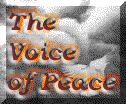 |
India & Pakistan At the Brink Of Nuclear War |
|
|
Effects of the conflict on Indo-Pak economy The citizens of both these developing nations are faced with widespread poverty, appalling levels of infant mortality, poor health, lack of basic education and access to basic necessities of life. Yet, "neither India nor Pakistan seems to scrimp on resources for their expensive military programmes, despite their economic conditions". (James Woolsey, CIA Director) In India, with an estimated population in 1995 of 940 million, 423 million people live in absolute poverty, 25 % do not have access to safe drinking water, and 87 % to sanitation. In 1990, India spent some Rs 176.84 billion ($30.2 billion) on military alone. Between 1989 and 1991, India's rate of growth declined by 40 percent, while its level of debt increased by over 20 percent. Increased deployment of the Army for tackling the insurgency situation in the north-east and Jammu and Kashmir was eating into the defence budget of the country, Union Defence Minister George Fernandes stated. ``The defence outlay needs to be increased substantially, keeping in view so many aspects, including the salary hike,'' According to Fernandes a sizeable amount of funds allocated for defence was being regularly diverted to tackle the insurgency situation at the expense of the defence of the country's external boundaries. Given its large military presence in Kashmir (300,000 soldiers) almost one soldier for every 20 Kashmiris, a significant proportion of the military expenditure is spent on operations to deal with militancy. India currently spends over one million US dollars per day towards the cost of such army operations and subsidies in Kashmir. Indian presence in Kashmir has been likened to US operations in Vietnam and Soviet operations in Afghanistan. "A debilitating war costing millions of dollars and thousands of innocent lives with no coherent political policy to control it, and little chance of victory". ( Moore and Anderson 1993) Pakistan is one of the world's poorest countries, ranked 132 out of 173 in terms of human development. In 1992-1993 Pakistan spent 82 billion Rupees ($3 billion) on defence. Given debt service payments of US $3.5 billion (93 billion rupees), little over US $ 0.1 billion (3.3 million rupees) was left for development. Pakistan's defence expenditure and debt-servicing exceeded government tax revenue with defence accounting for almost 40 per cent of government spending. The conflict is sapping the economies of both India and Pakistan, depriving their own people of basic necessities of life by diverting their much needed resources to sustain their grip over Kashmir. Two of the three debilitating wars already fought between Indian and Pakistan have failed to resolve the conflict and a fourth war, mostly nuclear, with ruinous consequences for the entire subcontinent must remain a serious concern for all of us. With the recent show of their nuclear capabilities which has brought them world wide condemnation and economic sanctions, let us hope and pray that these two arch rivals will be persuaded to engage in a meaningful dialogue to resolve their outstanding issues. But the single most important issue between the two , which holds the key to a lasting peace and stability in the sub-continent is the Kashmir issue. The Indo-Pak Arms Race: the human costs It has been internationally recognized that Jammu & Kashmir is the underlying root of all tensions between India and Pakistan. The two countries are wasting their precious resources on military build-up over Kashmir. The ensuing arms race has tremendous human costs. The military spending of both countries is at the expense of the common people of India and Pakistan. Kashmir Online has compiled a summary of statistics indicating the pressing economic problems both nations are facing compared to the Indo-Pak arms race that is diverting vital sources from these problems. India Population: 966,783,171 (July 1997 est.) Infant mortality rate: 65.5 deaths/1,000 live births Life expectancy at birth: 62.41 years Literacy:
A large share of the population, perhaps as much as 40%, remains too poor to afford an adequate diet. Sources: CIA World Fact Book, (C-D) "Report of the Expert Group on estimation of proportion and number of the poor", Perspective Planning Division, Planning Commission, GOI, New Delhi, July 1993 Pakistan Population: 132,185,299 (July 1997 est.) Infant mortality rate: 95.1 deaths/1,000 live births (1997 est.) Life expectancy at birth: 58.77 years Literacy:
Pakistan is a poor, highly populated Third World country struggling to make the difficult transition to the modern world of high technology and international markets. 33 % of the population are estimated to be below the poverty line. |